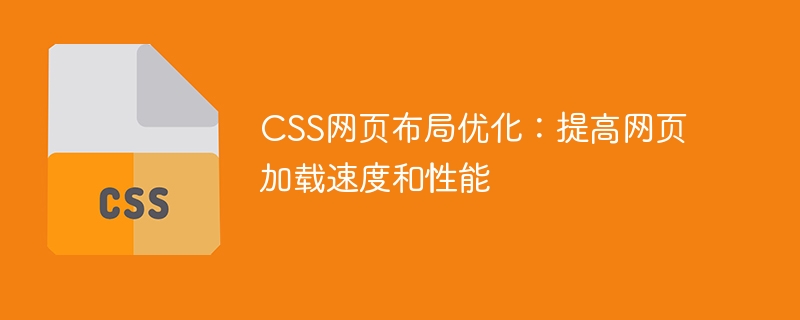

CSS web page layout optimization: To improve web page loading speed and performance, specific code examples are required
With the development of the Internet, users have higher and higher requirements for web page loading speed and performance. Come higher and higher. For web developers, optimizing web page layout is an important part of improving web page loading speed and performance. In this article, we’ll share some practical CSS optimization tips and provide concrete code examples.
.container {
display: flex;
justify-content: center;
align-items: center;
}
.item {
flex: 1;
margin: 10px;
}module.exports = function(grunt) {
grunt.initConfig({
cssmin: {
target: {
files: {
'dist/minified.css': ['src/style1.css', 'src/style2.css']
}
}
}
});
grunt.loadNpmTasks('grunt-contrib-cssmin');
grunt.registerTask('default', ['cssmin']);
};$primary-color: #007bff;
.main-container {
background-color: $primary-color;
.header {
font-size: 24px;
color: white;
}
.content {
padding: 20px;
}
.footer {
margin-top: 10px;
text-align: center;
}
}.box {
width: 100px;
height: 100px;
background-color: red;
transition: width 1s, height 1s;
}
.box:hover {
width: 200px;
height: 200px;
}In summary, by choosing the appropriate layout method, compressing and merging CSS files, using CSS preprocessors, and avoiding expensive CSS selectors As well as optimizing the use of CSS animations and transitions, we can effectively improve the loading speed and performance of web pages. I hope that the above specific code examples can help you carry out corresponding optimization work in actual development.
The above is the detailed content of CSS web page layout optimization: improve web page loading speed and performance. For more information, please follow other related articles on the PHP Chinese website!




